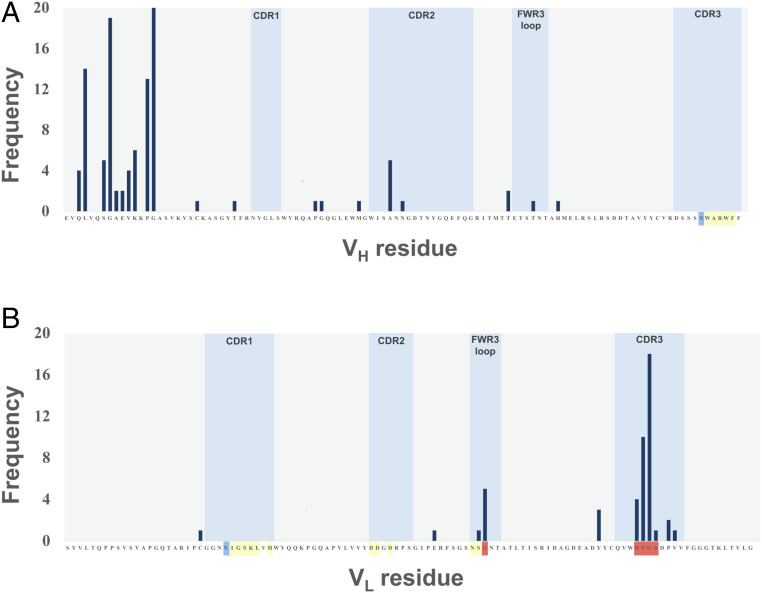Fig. 4.
Tolerance for insertions across the variable regions of the BAK1 antibody: 5,632 variants from the TRIAD library with single amino acid insertions (Fig. 2A and Table 1) were randomly picked and screened for retention of IL-13 binding. The positions where insertions resulted in binding levels similar or better than BAK1 are indicated by the frequency observed for insertions before the residue of the (A) VH and (B) VL sequence of the BAK1 antibody, respectively. The frequency refers to the number of hits at a given position (even if the inserted amino acid differs). The loop showing the highest frequency of insertion tolerance (i.e., VL CDR3) was chosen as the target for insertional mutagenesis. The positions are color-matched to Fig. 6, where the yellow color indicates residues that constitute the paratope, positions shown in blue are those for which substitutions had been shown previously to improve affinity (in BAK1.1) (35) and positions in red correspond to the insertions identified in this work.

